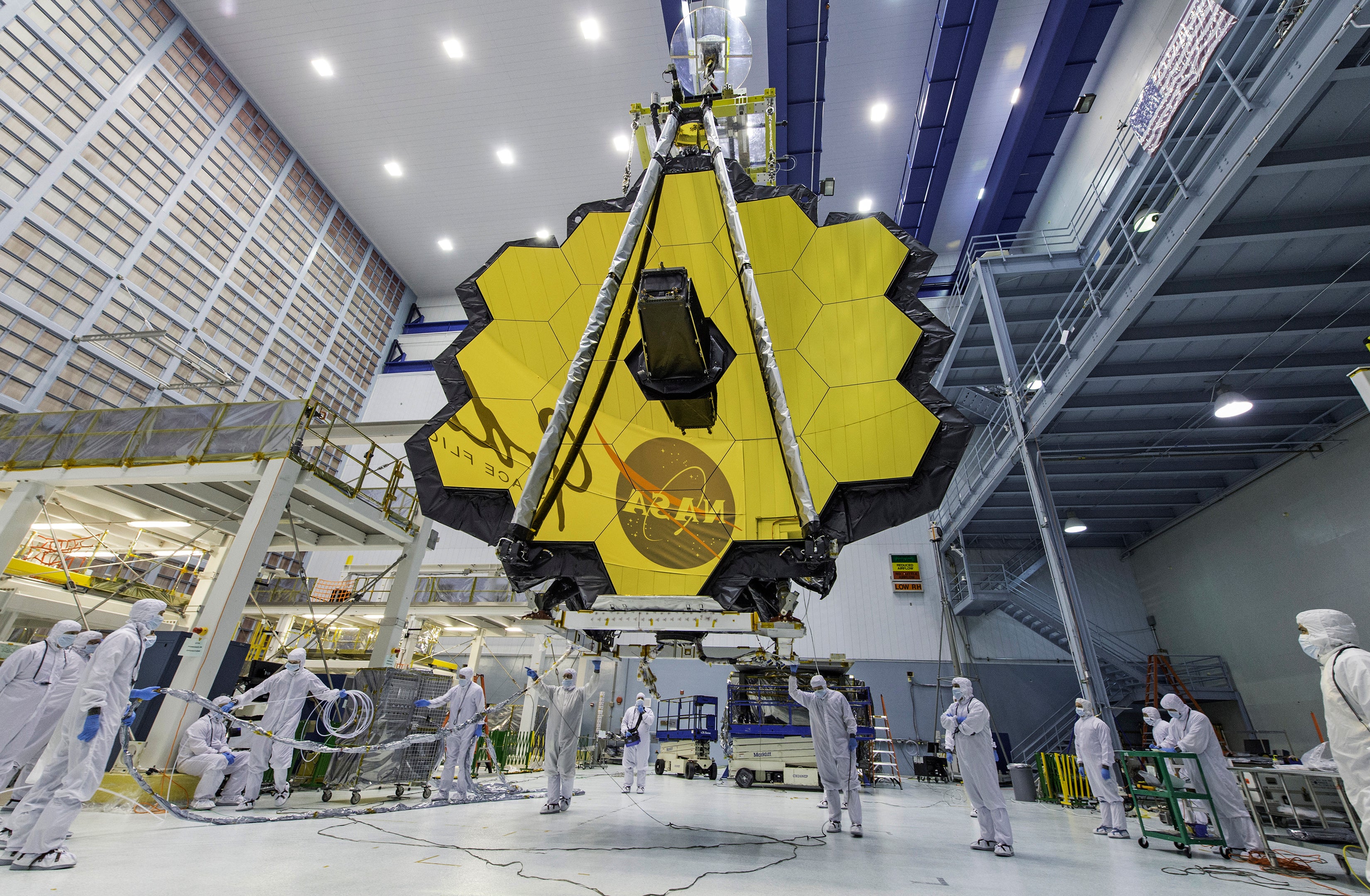Nasa’s galaxy-scouring James Webb Space Telescope completes crucial sunshield unfurling stage
The telescope has to undergo a number of stages before it will be ready for use later next month

Your support helps us to tell the story
From reproductive rights to climate change to Big Tech, The Independent is on the ground when the story is developing. Whether it's investigating the financials of Elon Musk's pro-Trump PAC or producing our latest documentary, 'The A Word', which shines a light on the American women fighting for reproductive rights, we know how important it is to parse out the facts from the messaging.
At such a critical moment in US history, we need reporters on the ground. Your donation allows us to keep sending journalists to speak to both sides of the story.
The Independent is trusted by Americans across the entire political spectrum. And unlike many other quality news outlets, we choose not to lock Americans out of our reporting and analysis with paywalls. We believe quality journalism should be available to everyone, paid for by those who can afford it.
Your support makes all the difference.The James Webb Telescope has successfully deployed part of its sunshield, one of the vital stages in its unfurling that will help scientists look further back in time than ever before.
The telescope was sent into space on Christmas Day, but that was only one part of its lengthy launch process; it must also unfurl its 18-segment mirror which will take place over a matter of weeks.
Three days after its initial launch, a key step in this process was completed. The Forward Unitized Pallet Structure (UPS) section of its sunshield was unfurled over a four-hour period. The heat shield is made of five layers of heat-resistant Kapton film.
“While the actual motion to lower the forward pallet from its stowed to its deployed position took only 20 minutes, and the lowering of the aft pallet took only 18 minutes, the overall process took several hours for each because of the dozens of additional steps required”, Nasa wrote in a blog post.
“These include closely monitoring structural temperatures, maneuvering the observatory with respect to the sun to provide optimal temperatures, turning on heaters to warm key components, activating release mechanisms, configuring electronics and software, and ultimately latching the pallets into place.”
Nasa’s next step for the telescope will be to unfold the Deployable Tower Assembly, release the sunshield cover, and then unfurl the sunshield itself. It is expected that the telescope will reach its final stages before the end of January.
“We’ve got five sun shield layers approximately 8,900 sq ft — almost the size of three tennis courts of very thin Kapton material about one to two thousandths of an inch thick. Making them go where you want them to go in zero gravity is extremely challenging”, Mike Menzel, Webb’s lead mission systems engineer at Nasa’s Goddard Space Flight Centre said.
Once in place, the James Webb Telescope will work in tandem with the Hubble space telescope, but because its mirror is larger it will be able to gaze further back into the history of the universe.
It will be able to look an astonishing 13.7 billion years, a mere 100 million years after the universe-forming Big Bang, to see the original stars taking shape.
Scientists are eager to see how closely these initial galaxies resemble our own Milky Way.
Join our commenting forum
Join thought-provoking conversations, follow other Independent readers and see their replies
Comments